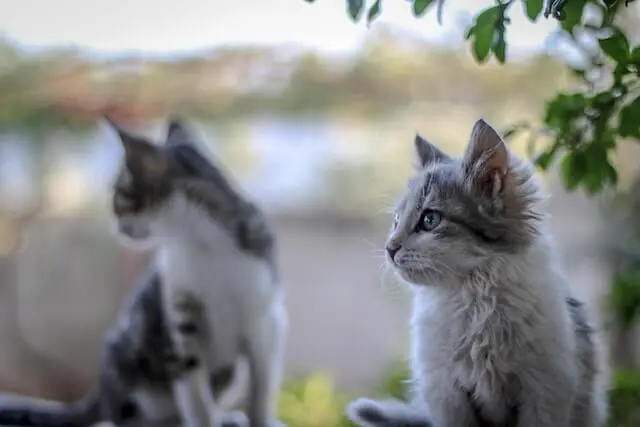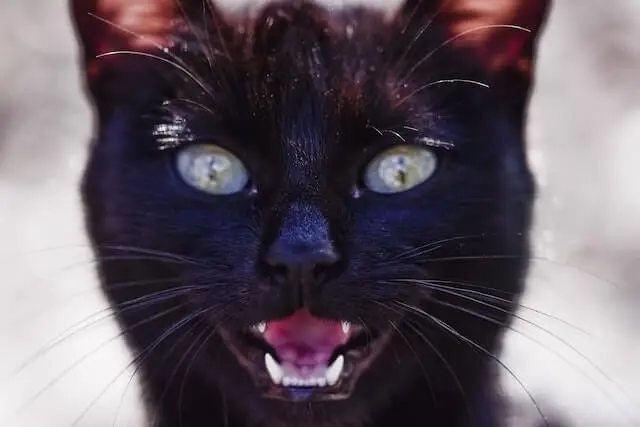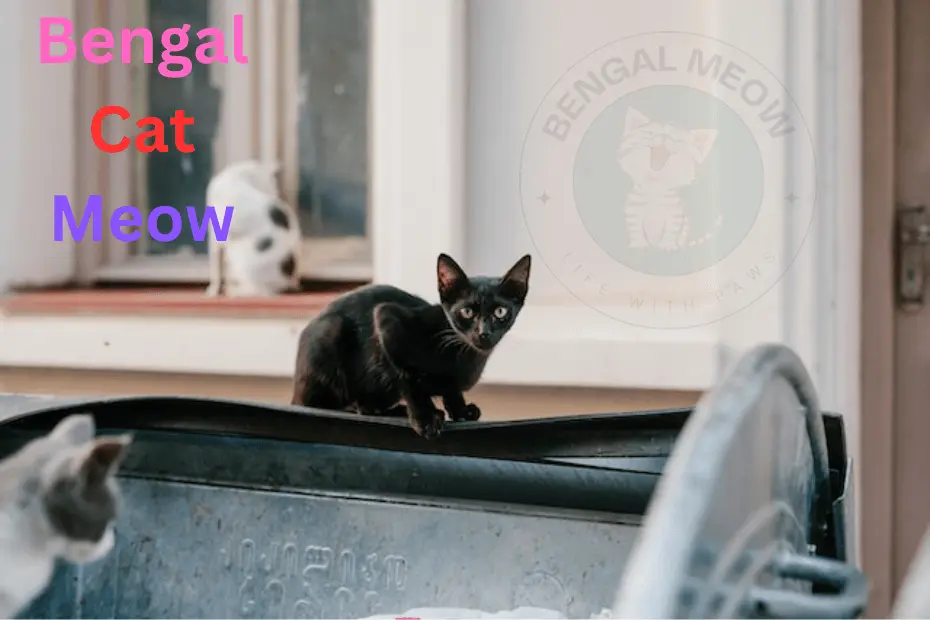Unveiling the Melodious Meow of Bengal Cats: A Fascinating Feline Communication
Bengal cats, renowned for their strikingly beautiful coat patterns and wild ancestry, possess an equally fascinating vocal repertoire. In this article, we embark on a journey into the enchanting world of Bengal cat meows, exploring the diverse range of sounds they produce and the underlying meanings behind their vocalizations. From soft purrs and chirps to intense yowls and trills, these expressive felines have a unique way of communicating with both humans and other cats. Join us as we delve into the depths of Bengal cat vocalizations, deciphering their language and shedding light on the significance of their melodious meows.
The Language of Bengal Cat Meows
Bengal cats have a unique language of meows that they use to communicate with their owners and other cats. Understanding their vocalizations can help you decipher their needs and emotions more effectively. Let’s explore the language of Bengal cat meows and their meanings:
- Purring: Purring is a common sound made by Bengal cats and is often associated with contentment and relaxation. When your Bengal cat purrs, it indicates that they are in a calm and comfortable state. It’s their way of expressing pleasure and happiness.
- Chirping: Bengal cats are known for their distinctive chirping sound, which is a combination of a meow and a bird-like noise. They often make this sound when they are excited or intrigued by something they see, such as a bird outside the window or a toy. Chirping is their way of expressing curiosity and anticipation.

- Trilling: Trilling is a melodic sound made by Bengal cats, resembling a rolling “R” sound. They use trills as a form of communication, often to greet their owners or other cats. It’s a friendly and welcoming sound that indicates affection and a desire to engage socially.
- Meowing: Bengal cats have a wide range of meows, each with its own meaning. Short, high-pitched meows are often associated with hunger or a request for attention. These meows may become more insistent if they feel their needs are not being met. On the other hand, low-pitched or drawn-out meows can indicate discomfort, pain, or a desire to be left alone. It’s important to pay attention to the tone and context of their meows to understand what they are trying to communicate.
- Yowling: Yowling is a more intense and prolonged version of meowing. Bengal cats may yowl when they are in distress, feeling threatened, or in pain. It’s their way of expressing strong emotions or seeking help. If your Bengal cat yowls excessively, it’s important to investigate the underlying cause and consult with a veterinarian if necessary.
- Growling and Hissing: While not strictly meows, Bengal cats may also use growling and hissing as vocalizations to express aggression or territoriality. These sounds are warning signals and indicate that your cat feels threatened or defensive.
Understanding the language of Bengal cat meows requires attentive observation and familiarity with your cat’s individual vocalizations. Pay attention to the context, body language, and accompanying gestures to accurately interpret their meows. Over time, you’ll develop a deeper understanding of your Bengal cat’s unique vocal language, strengthening the bond between you and your feline companion.
Check also: Types of Bengal Cats: A Comprehensive Guide to the Different Varieties
Bengal Cat Meows and Communication
Bengal cat meows play a crucial role in their communication with humans and other cats. Understanding their vocalizations can help you establish a stronger bond with your Bengal cat and respond to their needs effectively. Let’s explore how Bengal cats use meows to communicate:
- Communication with Humans:
Bengal cats are known for their ability to understand human behavior and adapt their meows to interact with their owners. They use different tones, volumes, and patterns of meows to express their needs and emotions. Here are some common ways Bengal cats communicate with humans through meowing:
- Attention-Seeking: Bengal cats may meow to get your attention when they want to play, be petted, or simply engage with you. They may use persistent, high-pitched meows to express their desire for interaction.
- Hunger: When Bengal cats are hungry, they often meow to let you know it’s time for a meal. The meows may become more intense and frequent as they try to communicate their hunger.
- Discomfort or Distress: If your Bengal cat is feeling uncomfortable or in pain, they may meow in a different tone or pitch to convey their distress. It’s important to pay attention to these meows and investigate any underlying health issues or sources of discomfort.
- Affection: Bengal cats may use soft, gentle meows to express their affection towards you. These melodic meows often accompany purring and other signs of contentment.
- Interactions with Other Cats:
Bengal cats are highly sociable and have a complex system of vocalizations when interacting with other cats. Meowing, chirping, trilling, and other sounds serve various purposes in their communication:

- Playtime: Bengal cats may engage in playful meowing, chirping, and trilling when interacting with other cats. These vocalizations signal their desire to play and engage in friendly interactions.
- Establishing Boundaries: When Bengal cats encounter other cats, they may use meows to establish territorial boundaries. These vocalizations can express dominance or signal submission, depending on the context and the relationship between the cats.
- Courtship and Mating: During courtship rituals, Bengal cats may use specific vocalizations to attract potential mates. These sounds can be soft, melodic, and accompanied by body language cues to indicate their readiness to mate.
- Mother-Offspring Communication:
Bengal cat mothers use a unique vocalization called a “murmur” to communicate with their kittens. This soft, rhythmic sound helps establish a bond between the mother and her offspring. The murmur acts as a soothing and reassuring vocalization, ensuring the safety and well-being of the kittens. As the kittens grow, they develop their own vocal repertoire and learn to communicate with their mother and siblings through various meows and sounds.
In addition to meows, Bengal cats use other non-verbal cues to communicate, such as body language, facial expressions, and tail movements. It’s important to observe these signals alongside their meows to gain a comprehensive understanding of their communication.
Building a strong bond with your Bengal cat involves active listening and responding to their meows in a way that meets their needs. By understanding their vocalizations and cues, you can engage in meaningful interactions and create a harmonious environment for your feline companion.
Check also: Bengal Cat vs Tabby Cat: Understanding the Key Differences
Understanding Your Bengal Cat’s Meows
Understanding your Bengal cat’s meows is essential for effective communication and building a strong bond with your feline companion. By paying attention to their vocalizations and associated cues, you can decipher their needs, desires, and emotions. Here are some tips to help you understand your Bengal cat’s meows:
- Pay Attention to Context:
The context in which your Bengal cat meows is crucial for understanding their message. Observe the situation and their body language to gain insights into what they might be trying to communicate. For example, if they meow while sitting next to their food bowl, it’s likely that they are expressing hunger or asking for a meal. Similarly, if they meow near the door, they may be indicating their desire to go outside.
- Recognize Meow Patterns:
Bengal cats often have specific meow patterns associated with different needs or emotions. By familiarizing yourself with these patterns, you can better understand what your cat is trying to convey. Pay attention to the pitch, duration, and intensity of their meows. For instance, short and repetitive meows may indicate a request for attention or playtime, while long and low-pitched meows may suggest discomfort or illness.
- Observe Body Language:
Alongside their meows, Bengal cats communicate through body language. By observing their posture, tail position, ear movements, and facial expressions, you can gain additional insights into their emotional state. For example, if your Bengal cat meows while arching their back and puffing up their fur, they may be feeling threatened or defensive. Understanding their overall body language can help you interpret their meows more accurately.

- Respond Appropriately:
Once you understand the meaning behind your Bengal cat’s meows, it’s crucial to respond appropriately to their needs. If they are meowing for food, provide them with a meal. If they are meowing for attention or playtime, engage with them and provide the interaction they desire. By responding promptly and appropriately, you reinforce a positive and trusting relationship with your Bengal cat.
- Establish Communication Cues:
Bengal cats are intelligent and can learn to associate specific meows with desired actions or behaviors. You can establish communication cues by consistently responding to certain meows in a specific way. For example, if your cat consistently meows at the door to go outside, you can teach them to associate a specific command or gesture with that request. Over time, they will learn to use that meow when they want to go outside.
Check also: Are Bengal Cats Hypoallergenic? Debunking the Myth
- Consider Health and Well-being:
While meowing is a natural form of communication for Bengal cats, excessive or sudden changes in their meowing patterns may indicate an underlying health issue. If you notice a significant increase in meowing or if your cat’s meows sound different from their usual vocalizations, it’s essential to consult with a veterinarian to rule out any potential health concerns.
In conclusion, understanding your Bengal cat’s meows is key to developing a strong and harmonious relationship with them. By paying attention to the context, recognizing meow patterns, observing body language, and responding appropriately, you can effectively communicate with your Bengal cat and meet their needs. Remember that each cat is unique, and it may take time to fully understand their individual vocalizations. Through patience, observation, and active listening, you can deepen your bond and create a fulfilling connection with your Bengal cat.
Conclusion
The melodious meows of Bengal cats offer a glimpse into their rich and intricate communication system. Through purrs, chirps, trills, and meows, these magnificent felines express a range of emotions, desires, and intentions. By understanding their vocal language, we can develop a stronger connection with our Bengal cats, nurturing a relationship built on trust and mutual understanding. So, next time you hear your Bengal cat’s captivating meows, listen closely, and embark on a magical journey of feline communication like no other.






One thought on “Unveiling the Melodious Meow of Bengal Cats: A Fascinating Feline Communication”
Comments are closed.